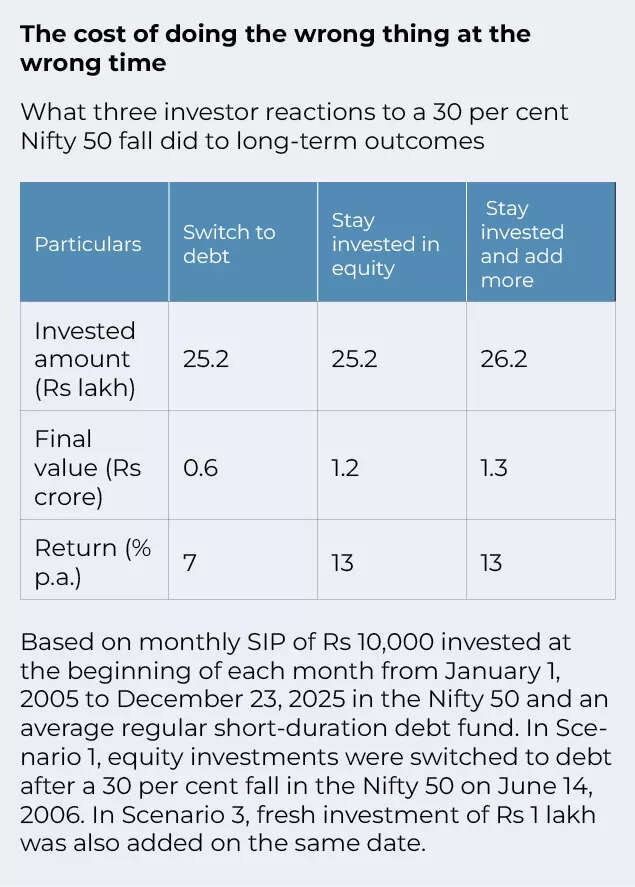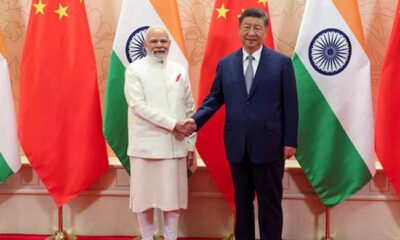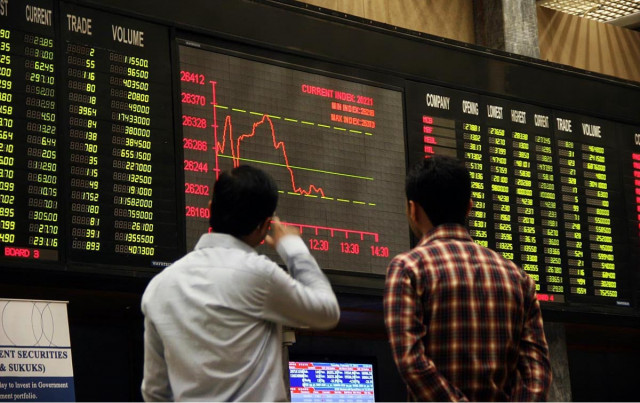Business
How to avoid buying fakes on Walmart, Amazon and other online marketplaces

As more consumers prioritize convenience and value over brand loyalty, experts say they’re turning to online marketplaces more than ever to buy the things they need, raising the risk they could inadvertently purchase a fake product.
While fake goods have exchanged hands in informal markets since ancient times, the growth of online marketplaces has contributed to the rise in counterfeits because of how easy online shopping and selling have become. A CNBC investigation of Walmart‘s marketplace published Friday uncovered dozens of third-party sellers who had stolen the identity of another business, and some of them were offering fake health and beauty products.
After CNBC shared its reporting with Walmart, the company began tightening its vetting process for some products and sellers and said it has a “zero-tolerance policy for prohibited or noncompliant products.”
Serene Lee | SOPA Images | Lightrocket | Getty Images
Between 2020 and 2024, e-commerce as a percentage of overall U.S. retail sales reached record highs, and goods seized for intellectual property violations more than doubled during that general time period, according to U.S. Customs and Border Protection.
When shopping on online marketplaces, consumers need to be “very careful” to avoid inadvertently purchasing fakes, said Megan Carpenter, the dean and professor of intellectual property law at the University of New Hampshire’s Franklin Pierce School of Law.
“You’re purchasing from sellers, distributors, manufacturers that are all over the world with the push of a button,” said Carpenter, who previously practiced intellectual property law. “Sometimes you hear the phrase, ‘buy cheap, buy twice,’ but there are also big safety and danger issues” that come from purchasing fakes online, she said.
Counterfeit products have been endemic to third-party marketplaces for as long as they have existed, but it is difficult to quantify just how common they are. While longtime marketplace operators have made numerous policy changes over the years to crack down on fakes, the nature of the platforms makes it difficult to eradicate counterfeits altogether. Amazon said it has taken steps to address fakes on its platform, and is “proud of the progress” it has made in preventing counterfeits. Walmart added in its statement to CNBC that customers who are not satisfied with an item can return it for a full refund.
To ensure consumers are getting the real thing, here are a few guidelines experts said people should follow when shopping on online marketplaces.
Research the seller
Plenty of brands sell their products directly to consumers through online marketplaces. If the company that makes the item is the one that’s also selling it, experts said that’s always a consumer’s best bet when shopping on online platforms.
If the seller offering the item is not the brand, consumers should research the business to make sure it is legitimate.
In the past, the name or business information of a third-party seller offering a product wasn’t always clear. But the Inform Consumers Act, a law that took effect in 2023, now requires platforms to publish that information for certain sellers.
When shopping on marketplaces like Walmart and Amazon, consumers can see the name of the seller offering the product on the right-hand side of the page. When they click the business name, they can typically see more information, such as its address, phone number and some information about what it does.
The seller’s page will offer a host of clues to consumers. Shoppers can typically see where the business is based, go over its catalog of items and read the reviews it has received. If other shoppers have left reviews saying the business sold fake products, that’s a good sign that consumers should find another seller or other place to purchase the goods.
Shoppers should also check the address of the business. For example, if the seller is offering beauty products and the address either doesn’t exist or goes back to a car repair shop, that’s a red flag.
The name of the business matters, too, said Kari Kammel, the director of the Center for Anti-Counterfeiting and Product Protection at Michigan State University.
“For example, if you’re buying toys online, and the seller is called, you know, cheap kitchen utensils shop, there’s a discrepancy there, right?” she said. “So it can be a red flag.”
If it’s not immediately obvious if the brand is selling the item, a quick Google search will typically reveal whether the marketplace seller is an authorized distributor of the product. Many brands publish information about resellers on their websites.
When shopping for health and beauty items, the kinds of products that go in or on someone’s body, consumers should only buy directly from the brand or one of its authorized distributors to make sure they are getting genuine products, experts said.
“With any of these counterfeits, you’re gambling, right? You may get one that doesn’t cause any harm, but maybe it just won’t last as long, if you’re lucky,” said Kammel. “On the flip side, you may get something that just totally fails in what would be a normal quality or safety inspection from a legitimate company, and can cause serious harm.”
Plenty of the stuff sold on online marketplaces is considered first party, meaning the platform owns and distributes the products themselves on a wholesale basis. If consumers see “sold and shipped by Amazon” or “sold and shipped by Walmart” they can feel comfortable purchasing the item, regardless of the category, experts said.
Question the price
When shopping on online marketplaces, consumers should keep in mind the old adage: “If it looks too good to be true, it probably is.”
If a shopper sees a luxury beauty cream that’s being sold at a 91% discount from its typical retail price, as CNBC found during its investigation into Walmart’s marketplace, that’s a major red flag that the item could be counterfeit.
“One of the strongest hooks to get people to buy these counterfeit products, of course, is price,” said Saleem Alhabash, the associate director of research at Michigan State’s Center for Anti-Counterfeiting and Product Protection. “Making it sound like it’s too good of a deal to pass along.”
Sometimes, the products that third-party sellers are offering are discounted because they were purchased from liquidators or during a promotion directly from a retailer or brand. In those cases, the price reduction will usually be more modest and the item’s cost will be closer to the typical selling price, experts said.
Still, counterfeiters are getting more savvy and are using market data to price their products, Alhabash said. Sometimes, fake goods can be priced nearly identically to the typical selling cost, he said.
Packaging
When consumers buy from third-party sellers on online marketplaces and still aren’t sure if they’ve purchased a legitimate item, the product’s packaging can also offer clues once it arrives.
“Take a second to just look at it and see if it looks right,” said Kammel. “If they get it, and it’s a product they’ve used before and they still have the old packaging of the product, just do a quick side by side.”
A misspelling on a bottle of counterfeit Immuno 150 supplements purchased from Walmart.com.
CNBC
Sometimes, packaging could look different because the manufacturer changed it. In other cases, red flags like typos on the box could indicate the product is counterfeit. If the brand hasn’t changed the packaging, check to see if the design and size of the packaging is the same as what’s sold in stores.
When in doubt, consumers can always call the brand to make sure.
What to do if you buy a fake product
If a shopper buys something they believe is fake, they should stop using it immediately and report it to the platform they purchased it from, said Kammel. Here are a few other steps Kammel said shoppers should take:
- If you’re having a physical reaction to the product, seek medical attention to avoid further harm.
- Try reporting it to a government office for investigation, such as the state attorney general or the FBI’s Internet Crime Complaint Center.
- Document the seller’s information, including their name, business address and phone number.
- Log other evidence, including the transaction receipt, the link to the listing, and pictures of the packaging and the product.
- Consider reporting it to the brand to let them know what happened.
Business
Apollo Techno Industries IPO Last Day: Issue Receives 50.63x Subscription; GMP Rises To 9.23%

Last Updated:
Unlisted shares of Apollo Techno Industries are trading at Rs 136 apiece in the grey market, which is 4.6% premium over the issue price of Rs 130, indicating weak listing.
Apollo Techno Industries IPO.
Apollo Techno Industries IPO GMP: The initial public offering (IPO) of Apollo Techno Industries Ltd (ATIL) has been closed today, Friday, December 26. The price band of the Rs 47.96-crore IPO has been fixed in the range of Rs 123 and Rs 130. On the final day of bidding on Friday, the IPO received a total of 50.63x times subscription, garnering bids for 12,42,53,000 shares as against 24,54,000 shares on offer.
Its retail category got a 44.81x subscription, while its non-institutional investor (NII) quota got a 98x subscription. Its qualified institutional buyer (QIB) category has received a 25.26x subscription.
ATIL is a manufacturer specialising in trenchless technology and foundation equipment for the construction industry
Apollo Techno Industries IPO GMP Today
According to market observers, unlisted shares of Apollo Techno Industries Ltd are currently trading at Rs 142 apiece in the grey market, which is a 9.23 per cent premium over the issue price of Rs 130. It indicates a weak listing. Its listing will take place on December 31, Wednesday.
The GMP had stood at 4.62 per cent in the morning.
The GMP is based on market sentiments and keeps changing. ‘Grey market premium’ indicates investors’ readiness to pay more than the issue price.
Apollo Techno Industries IPO: More Details
The Apollo Techno Industries Limited IPO is a book-built issue worth ₹47.96 crore, comprising only a fresh issue of 0.37 crore equity shares. There is no offer-for-sale component in the issue.
The IPO opened for subscription on December 23, 2025, and will close on December 26, 2025. The basis of allotment is expected to be finalised on December 29, 2025, while the shares are scheduled to list on the BSE SME platform on December 31, 2025, subject to approvals.
The price band for the issue has been fixed at Rs 123 to Rs 130 per share. The lot size is 1,000 shares. Retail investors are required to apply for a minimum of 2 lots (2,000 shares), translating into an investment of Rs 2.60 lakh at the upper end of the price band. For HNIs, the minimum application size is 3 lots (3,000 shares), amounting to Rs 3.90 lakh.
Beeline Capital Advisors Pvt Ltd is the book running lead manager to the issue, while MUFG Intime India Pvt Ltd is acting as the registrar. The market-making duties will be handled by Spread X Securities Pvt Ltd.
Apollo Techno Industries reported strong financial growth in FY25. The company’s revenue rose 44 percent, while profit after tax (PAT) surged 327 percent for the year ended March 31, 2025, compared with the previous financial year.
Incorporated in 2016, Apollo Techno Industries operates in the manufacturing and technology space, with a focus on equipment used in the construction and infrastructure sector.
The company specialises in trenchless technology and foundation equipment, catering to complex construction requirements. Its product portfolio includes Horizontal Directional Drilling (HDD) rigs, Diaphragm Drilling Rigs, Rotary Drilling Rigs, along with associated spare parts.
December 26, 2025, 10:51 IST
Read More
Business
New BIS standard for incense sticks: Govt bans certain substances; flags ‘potential impact on human health’ – The Times of India

NEW DELHI: The government issued a notification announcing a new Indian Standard for incense sticks (agarbatti), laying down quality norms and specifying a list of substances prohibited for use in their manufacture.The standard has been developed by the Bureau of Indian Standards (BIS) to ensure safer products and promote responsible and sustainable practices in the incense stick industry, the minister for consumer affairs said in a statement released on National Consumer Day 2025.The ministry released a list of harmful substances. “This includes certain insecticidal chemicals such as alethrin, permethrin, cypermethrin, deltamethrin, and fipronil, as well as synthetic fragrance intermediates like benzyl cyanide, ethyl acrylate, and diphenylamine. Many of these substances are restricted or banned internationally due to their potential impact on human health, indoor air quality, and ecological safety,” it said.According to the notification, the standard classifies agarbattis into machine-made, hand-made, and traditional masala agarbattis, and prescribes norms for raw materials, burning quality, fragrance performance and chemical parameters. This, the ministry said, will ensure safer products and consistent quality for consumers.Agarbattis are deeply embedded in India’s cultural and religious life and are widely used in homes, places of worship, meditation centres.With rising global demand for incense products growing steadily in India and overseas, the international studies and regulatory developments, “particularly in Europe have raised concerns over the use of certain synthetic chemicals in fragranced products, including incense sticks,” the release stated.Some of these substances have been linked to respiratory irritation, allergic reactions, neurological effects and environmental harm when used repeatedly in indoor environments, it added.The standard has been developed by the Fragrance and Flavour Sectional Committee (PCD 18) of BIS after extensive consultations with stakeholders.India is the world’s largest producer and exporter of agarbattis. The industry is estimated at around Rs 8,000 crore annually, with exports worth nearly Rs 1,200 crore to over 150 countries, including the US, Malaysia, Nigeria, Brazil and Mexico.The sector supports a large network of artisans, micro-entrepreneurs and MSMEs, especially in rural and semi-urban areas, and plays a key role in generating employment, particularly for women.The government said the new standard is “expected to enhance consumer confidence, promote ethical and sustainable manufacturing practices, support traditional artisans, and improve access to global markets. The standard reinforces India’s commitment to protecting its cultural heritage while aligning indigenous industries with modern quality and safety expectations. Products complying with this standard can also carry the BIS Standard Mark, helping consumers make informed choices with confidence.“
Business
Ask Dhirendra: ‘If I know markets go up in the long run, why do short-term losses bother me so much?’ – The Times of India

“‘If I know markets go up in the long run, why do short-term losses bother me so much?’This is one of the most honest questions an investor can ask.On paper, you know the logic. You’ve seen all the charts: “Sensex 100 to 70,000”, “Nifty over 20–25 years”, “equity beats inflation in the long run”. You nod wisely when someone says, “Equity is for the long term.”And then one fine day, you open your app, see your portfolio down 8–10 per cent, and your stomach drops.The mind says, “Long term”.The heart says, “Bas, ab yeh band karo.”Let’s start with some sympathy: there is nothing wrong with you. Your brain is not designed for SIPs; it is designed for survival.When our ancestors saw red (blood, fire, and danger) the correct response was to panic and run. Today, your app shows red numbers, and your brain uses the same wiring: “Danger, danger, get out.” The problem is that the stock market is the only place where running at the wrong time converts a temporary fall into a permanent loss.It helps to see what “short term” and “long term” actually look like in numbers.

The market tests patience before it rewards it
When we look at this kind of data at Value Research, the pattern is always similar. Over the course of a year, losses are frequent. Over ten-year periods, they shrink dramatically. So the market is not misbehaving when it falls in a single year. It’s behaving exactly like a market. It is unrealistic to expect a smooth, linear upward graph.There’s another uncomfortable truth. You don’t look at your portfolio like a long-term investor; you look at it like a daily scorecard. Every time you open the app, the number on top becomes a verdict on your intelligence. Up means “I am smart”; down means “I am stupid.” Of course, you don’t want to feel stupid for three months in a row.Now we put some more structure on this feeling.Imagine you start a ₹10,000 monthly SIP in a good, diversified equity fund for 15–20 years. Somewhere along the way, there is a year when the market is down 20 per cent.There are only three things that can happen in that year:
- You panic and stop your SIP or redeem.
- You grit your teeth and do nothing.
- You not only continue but increase your investments.

The cost of doing the wrong thing at the wrong time
When we run such scenarios at Value Research, the surprising part is this: the investor who simply does nothing in bad years often beats the one who keeps jumping around trying to avoid pain.So why can’t we “do nothing” easily?Partly because we confuse volatility with failure, a minus 10 per cent year feels like a verdict on our choice rather than a normal part of the journey. And partly because we mix up time horizons. We say, “This is for my retirement in 2045,” and then behave as if the performance over the last 45 days is all that matters.One practical way to calm yourself is to separate money by purpose. If you put all your money into the market and then need some of it next year, of course, every fall will feel catastrophic. But if you’ve done the boring work—kept an emergency fund, kept short-term money in safer avenues—then the equity money is truly long-term. You’re not going to need it next Diwali, so you don’t have to judge it every Diwali.Another trick is to change what you watch.Instead of staring at the absolute value, look at two different things:
- How much time do you have left before you actually need this money?
- How much of your target have you already accumulated?
At Value Research, our planning tools and advice try to shift people from “portfolio value today” to “probability of meeting your goal over time”. It’s much easier to tolerate a bad year in the market if you see that you’re still broadly on track for your long-term destination.And finally, accept this: you don’t have to enjoy seeing losses. You just have to not overreact to them. The test of a good investment is not whether it goes up every quarter; it’s whether it helps you reach your goals over ten or twenty years, without making you do something foolish in between.So if you know markets go up in the long run but short-term losses still bother you, that just means you’re human. Good. Stay human. Just put a system around your humanity:
- Keep your emergency and near-term money out of harm’s way.
- Use equity only for genuinely long-term goals.
- Decide your SIPs when you are calm, and refuse to renegotiate them with your panicked future self.
Red numbers on a screen are not a verdict on your intelligence. Most of the time, they’re just the market’s way of asking, “Did you really mean it when you said long term?”If the answer is yes, close the app and let time do the arguing for you.If you have any queries for Dhirendra Kumar you can drop us an email at: toi.business@timesinternet.in(Dhirendra Kumar is Founder and CEO of Value Research)
-

 Fashion1 week ago
Fashion1 week agoIndonesia’s thrift surge fuels waste and textile industry woes
-

 Tech1 week ago
Tech1 week agoT-Mobile Business Internet and Phone Deals
-

 Business1 week ago
Business1 week agoBP names new boss as current CEO leaves after less than two years
-

 Sports1 week ago
Sports1 week agoPKF summons meeting after Pakistani player represents India in kabaddi tournament
-

 Entertainment1 week ago
Entertainment1 week agoIndia streamlines visa rules in boost for Chinese professionals
-

 Sports1 week ago
Sports1 week agoUWCL grades for all 18 teams: Leuven get A+; Barça an A-, PSG fail
-
Sports6 days ago
Alabama turned Oklahoma’s College Football Playoff dream into a nightmare
-

 Entertainment1 week ago
Entertainment1 week agoRadiation fears rise after cracks found in $2 billion Chernobyl shield











